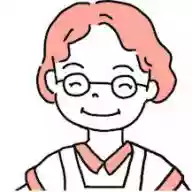[For Seniors] A Collection of Recommended Spring Songs for People in Their 80s
For those in their 80s looking for songs perfect for spring.
In this article, we’ll introduce recommended songs that are just right for the season.
From the postwar era, we’ve gathered mainly cheerful tunes that lift your spirits.
Some of you may remember hearing them on the radio.
When singing in a group at a senior facility, adding handclaps helps create a sense of unity.
Also, the shoka (school songs) composed in the Meiji and Taisho periods feature beautifully expressive lyrics that vividly evoke springtime scenes.
By all means, try singing them while recalling the landscapes of your hometown.
- [For Seniors] Recommended Spring Songs for People in Their 70s: A Collection of Nostalgic Spring Tunes
- Lively songs recommended for people in their 80s: A collection of nostalgic enka and kayōkyoku
- [For Seniors] Recommended spring songs for people in their 90s: A collection of Shōwa-era spring tunes
- Recommended youth songs for people in their 80s: A collection of nostalgic classics
- For seniors: Recommended youthful songs for people in their 90s. A collection of classic Showa-era hits.
- [Recommended for people in their 70s] Songs that really move you. Beloved classic Japanese hits of the past.
- A collection of cheerful, uplifting songs recommended for women in their 80s—fun, bright tunes to sing along to
- Energizing songs recommended for men in their 80s: A collection of nostalgic tracks that give you strength
- [For Seniors] Heartwarming Winter Classics: A Cozy Moment with Nostalgic Kayōkyoku and Traditional Songs
- Recommended winter songs for people in their 90s: A collection of Showa-era winter tracks
- Lively songs recommended for people in their 90s—fun songs for everyone to listen to and sing together.
- Great songs recommended for people in their 80s: a collection of tracks with lyrics that touch the heart
- [For Seniors in Their 80s] Recommended Summer Songs: From Enka and School Songs to Folk Songs
[For seniors] A roundup of recommended spring songs for people in their 80s (41–50)
Has the plum blossomed?Hibari Misora

This is a wonderful piece in which Hibari Misora expresses a traditional Edo-period hauta with her radiant voice.
The refreshing scenes of spring are beautifully intertwined with the elegance of the pleasure quarters, creating a heartwarming atmosphere alongside the timbre of the shamisen.
The song likens the changing seasons and people’s sentiments to evocative blossoms such as plum, cherry, and willow.
Riding on the light rhythm of the shamisen, Misora’s vocals gracefully evoke the charm of old Japan.
This piece has long been cherished as a song that lets listeners rediscover the beauty of Japanese traditional music.
It’s perfect for moments when you want to spend time peacefully or reminisce about nostalgic Japanese landscapes, and it’s also used to create a warm, friendly atmosphere at gatherings of older adults.
Tokyo RhapsodyIchiro Fujiyama

A classic song representing 1936 (Showa 11) was born in a work set in Ginza, Kanda, Asakusa, and Shinjuku, portrayed in a pure and light foxtrot style.
Ichiro Fujiyama’s beautiful voice elegantly sings of urban scenes and a love story.
This piece, which vividly brings to mind the bustling districts of Tokyo at the time, became a massive hit, selling 350,000 copies.
It was Fujiyama’s first release after moving to Teichiku, and a film of the same title was later produced, cementing its status as a beloved song that symbolizes the Showa era.
It’s a perfect track for a calm moment or when reminiscing about the past.
Enjoy a heartwarming time discussing what Tokyo was like back then together with older listeners.
Parting at 22wind

The debut song by the folk duo Kaze is a heartwarming classic, as gentle as the spring sunshine.
The lyrics vividly portray the pure love and parting of youth, while the tender acoustic guitar melody weaves a beautiful harmony.
Since its release in 1975, it has been covered by many artists and even adapted into a film by director Nobuhiko Obayashi in 2007, remaining beloved across generations.
In NHK’s “SukiUta — Kouhaku Everyone’s Survey,” it ranked 71st for the White Team.
It’s a perfect song for savoring slowly when you want to bask in nostalgic memories, and it could also spark lively conversations among older listeners about their experiences from back in the day.
Spring Night

This piece beautifully portrays a scene where the pure tones of the koto reverberate through a spring evening wrapped in silence.
Released in 1914 (Taisho 3), it is known as a masterpiece of Japanese music composed by Michio Miyagi at the young age of twenty.
It delicately depicts a man, guided by the sound of the koto on a night scented with white plum blossoms, experiencing a fleeting encounter with a beautiful woman.
The melodies Miyagi wove after overcoming blindness gracefully express the quiet of a spring night and the subtleties of the human heart, opening a new horizon for traditional Japanese music.
This work is recommended for those who wish to feel the changing seasons of Japan and the nuances of emotion.
On a tranquil spring night, why not surrender yourself to the harmonies of koto and shakuhachi?
Song of Springsong

This is a heartwarming song that began airing in March 1937 (Showa 12) on NHK’s Osaka Central Broadcasting Station as a National Song.
Composed by Hajime Uchida with lyrics by Kunizo Kishi, its melody has a familiar warmth that resonated with people’s daily lives at the time.
Across its four verses, the lyrics depict charming scenes: the sweet gaze of a flower seller, the bustle of a market lined with fresh vegetables, the chirping of fledgling birds, and a spring landscape swaying in a gentle breeze.
A record was released by Polydor in July of the same year, followed by a release from Teichiku the next year.
The song has been covered by many artists, including Chieko Baisho and the sisters Saori Yuki and Sachiko Yasuda, and it continues to be beloved as a piece that lets listeners share the joy of spring’s arrival.
It’s a tune you’ll want to hum with family and friends as the season signals the beginning of spring.
The Flower Girl of TokyoHaruo Oka

A classic from 1946 that paints a single flower of hope blooming at a Tokyo crossroads where blue willows are budding.
Sung with the warmth of Haruo Oka’s voice, the melody gently embraced people’s hearts during the turmoil of the postwar era.
Through the figure of a young flower seller with a gentle demeanor, the image of Tokyo rising from the ashes comes into view.
The lyrics by Sasa Shio and the composition by Gento Uehara blend beautifully, creating a gem of a song in which a definite hope can be felt even amid loneliness.
This work gracefully depicts the feelings of those seeking to take a new step with the arrival of spring.
It is a moving masterpiece recommended for anyone who wishes to spend a heartwarming moment in the spring sunshine.
Ringo OiwakeHibari Misora

This masterpiece gracefully portrays a farewell scene alongside the landscapes of Tsugaru.
With white clouds floating over Mount Iwaki, peaches and cherry blossoms, and early-blooming flowers as the backdrop, a fragile, aching sentiment—like petals dancing in the moonlight—touches the heart.
Hibari Misora beautifully conveys a lyrical world through her distinctive melodic phrasing infused with elements of folk songs and enka, and her deeply expressive singing.
Released in May 1952, the piece was produced as an insert song for the radio drama “Ringoen no Shōjo” (The Apple Orchard Girl) the same year, and was later chosen as the theme song when it was adapted into a film.
It achieved an astonishing 700,000 sales and is known as one of Hibari Misora’s signature songs.
Highly recommended for those who cherish deep memories in their hearts or wish to experience the charm of traditional Japanese popular music.






